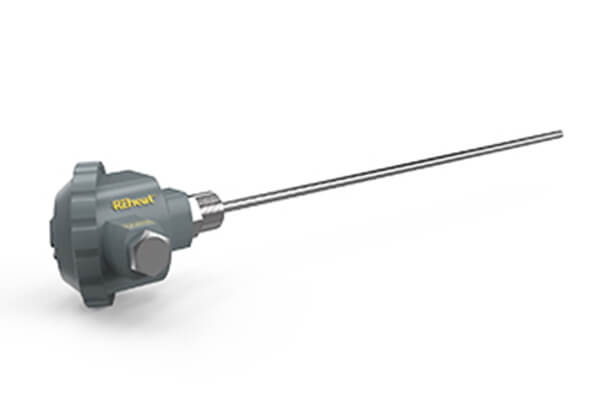Thermocouple is a common temperature measuring element. It can change temperature signal into electric heating signal by measuring temperature.
The working principle of thermocouple is that when two different conductors or semiconductors A and B form a circuit and their two ends are connected to each other, as long as the temperature at the two nodes is different, the temperature at one end is t, which is called the working end or hot end, and the temperature at the other end is t0 , known as the free end, which also known as the reference end or the cold end, the loop will generate an electromotive force, the direction and size of which are related to the conductor material and the temperature of the two contacts. This phenomenon is called thermoelectric effect, the circuit composed of two conductors is so-called thermocouple. These two conductors are called thermoelectric pole, and the generated electromotive force is called thermoelectric electromotive force.
Thermoelectric EMF consists of two parts. One is the contact EMF of two conductors, and the other is the temperature difference EMF of a single conductor. The magnitude of the thermoelectric EMF in the thermocouple loop is singly related to the conductor material and the temperature of the two contacts, but not to the shape and size of the thermocouple sensor. When the two electrode materials of the thermocouple are fixed, the thermoelectric EMF will be the two-contact temperature T and t0.
This relation has been widely used in practical temperature measurement. Because the cold end t0 is constant, the thermoelectric EMF produced by the thermocouple sensor only changes with the temperature of the hot end (measuring end), that is, a certain thermoelectric EMF corresponds to a certain temperature. We can achieve the goal of temperature measurement only by measuring thermoelectric EMF.
The basic principle of thermocouple temperature measurement is that two different components of material conductors form a closed circuit.

When there is a temperature gradient at both ends, there will be current passing through the circuit, and then there will be electromotive force - thermoelectric electromotive force between the two ends, which is the so-called Seebeck effect. Two kinds of homogeneous conductors with different components are thermoelectric poles, the one with higher temperature is the working end, the one with lower temperature is the free end, and the free end is usually at a constant temperature. According to the function relationship between thermoelectric EMF and temperature, the graduation table of thermocouple is made. The graduation table is obtained when the free end temperature is 0 ℃, and different thermocouples have different graduation tables.
When the third metal material is connected to the thermocouple circuit, as long as the temperature of two contacts of the material is the same, the thermoelectric potential generated by the thermocouple sensor will remain unchanged, that is, it will not be affected by the third metal in the circuit. Therefore, when the thermocouple is used for temperature measurement, it can be connected to a measuring instrument, and the temperature of the measured medium can be known after the thermoelectric EMF is measured. When measuring the temperature of a thermocouple, the temperature of its cold end (the measuring end is the hot end, and the end connected with the measuring circuit through the lead wire is called the cold end) is required to remain unchanged, and its thermal potential is proportional to the measured temperature. If the temperature of cold end (environment) changes during measurement, it will seriously affect the accuracy of measurement. Taking some measures to compensate for the influence caused by the change of cold end temperature is called normal cold end compensation of thermocouple. Special compensating wire for connection with measuring instrument.
There are two calculation methods of thermocouple cold junction compensation. First is from millivolt to temperature: measure the cold end temperature, convert it to the corresponding millivolt value, add it to the millivolt value of the flang thermocouple, and convert it to the temperature. Another compensation is from temperature to millivolts: measure the actual temperature and cold end temperature, convert them into millivolts respectively, and then get millivolts after subtraction, that is, temperature.



















